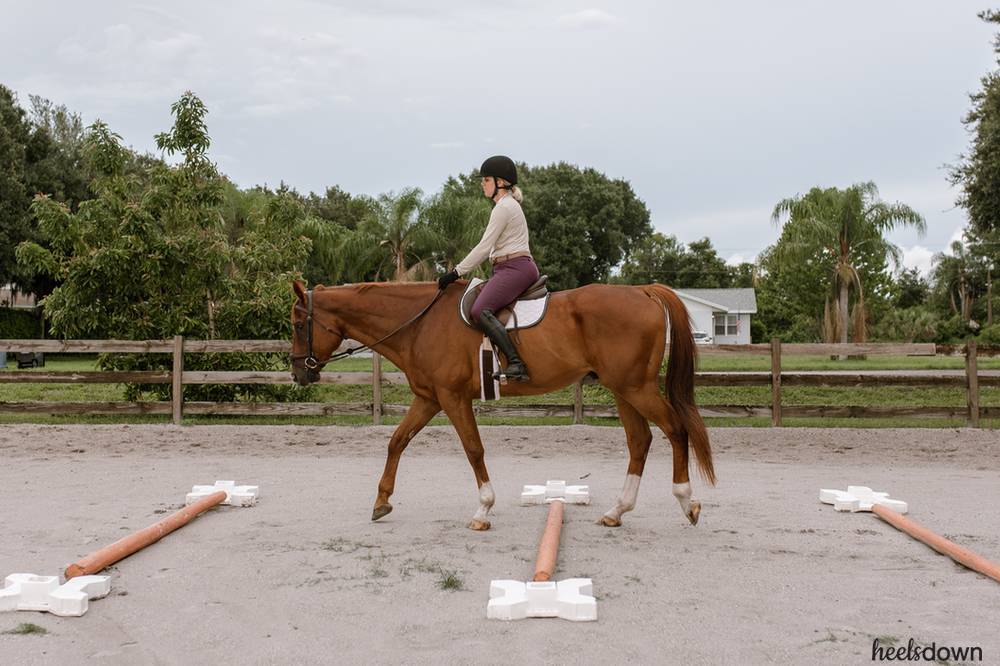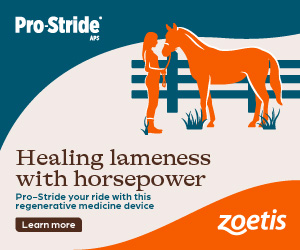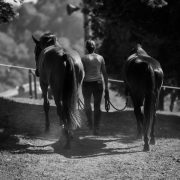The Gait You Often Overlook: The Walk

The walk. It’s what we do to stretch the legs at the beginning of the workout, or to cool out after or in-between. There’s even different speeds: from the medium or working walk, to the free, loopy-reined, ground-covering one.
The walk is a gait most riders often overlook. We’re quick to get moving, where we think the “real work” begins, at the trot and canter. But there are plenty of exercises you can do at the walk that are mentally challenging and physically stimulating for both the horse and rider.
Whether you’re bringing your horse back from an injury, or are limiting strenuous work during the record heat this summer, here are some exercises riders can do at the walk.
Practice Pedaling.
Some dressage pros say that the walk is the hardest gait to ride, actually, because it lacks the suspension that comes from momentum. Whether you’ve got a horse that prefers to walk pretty fast, or one that is lazy and often drags his feet, finding the right tempo and maintaining that rhythm in the walk is key for dressage, but it’s also a great training tool to get your horse on the aids and paying attention, no matter which discipline you ride.
Like This Story? Try: Get Your Horse To Stop Rushing Fences With These 4 Simple Exercises
The goal should be to get your horse to walk with four even beats, while being relaxed enough to reach for the bit and still come through the hind end. One way to do that is called “pedaling”.
In this exercise, the rider should think about how they ride a bike. When the horse’s right shoulder is closest to the tack (not reaching), and the right hind is pushing off, feel how the horse’s rib cage will swing away from the leg in that motion. To “pedal”, the rider should pay attention to the side-to-side motion as the horse’s rib cage moves in the walk. The rider should stretch deep into their heels, pushing the energy that moves in the hips during this “sway” into their feet. That pulse of energy from hip-to-heel will encourage a more free-moving gait.

Correct bad habits.
Most riders are left or right dominant. Sometimes injury can affect which side of the body is stronger, but other times it’s more subtle than that. If you’re finding issues with your position or miscommunication with the aids while trotting or cantering, you might benefit from taking it down a notch and addressing your alignment at the walk. Use lateral movements, like leg yields, turn on the forehand or turn on the haunches maneuvers to help you gauge where the trouble is coming from.
Then practice at the walk while you’re being hyper-aware of your imbalance or other issue.
Here’s how to ride a turn on the forehand: Begin by making sure you are sitting balanced in the saddle, with both seat bones feeling equal, and your legs stretching down into your heels. Be sure to have a light, but firm contact on the reins, making sure your outside rein is slightly softened, as you’re about to ask your horse to turn his body in that direction.
Allow the outside leg to sit “passively” on his barrel, which will serve mostly as a “wall” that keeps his haunches from slipping in too much. Bring the inside leg back behind the girth (but not too much) and add pressure with your calf and ankle to encourage the horse to move his haunches a step away from the leg, or to the outside. The horse should begin to “arc” around his forehand with each side-step of his haunches.
How to ride a leg yield: In a proper leg yield, the rider is asking the horse to cross over with his legs (in this case, at the walk) to move in calculated, sideways steps to the left or right while still carrying that forward momentum. To ask your horse for a leg yield, add more weight to your inside seat bone and turn your inside hip slightly forward. This way, the inside leg can be used as a driving aid and act as a “wall” to keep the horse from getting too crooked in his haunches.
The inside leg should slide slightly behind the girth and begin to add pressure. The horse will move away from the inside leg. The rider should ask the horse to look to the inside with a slight bend.


